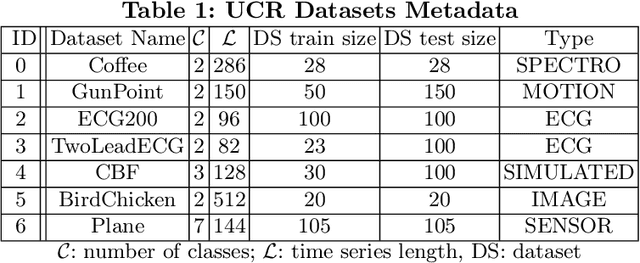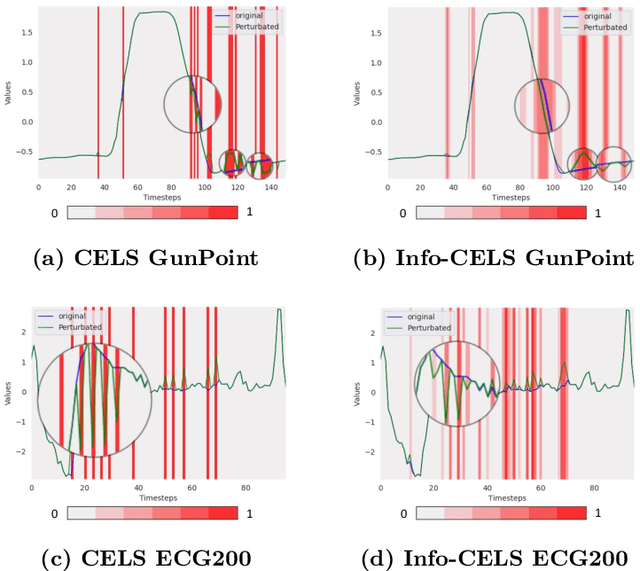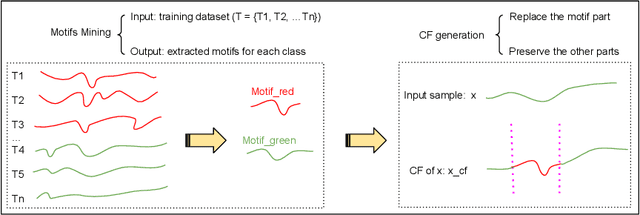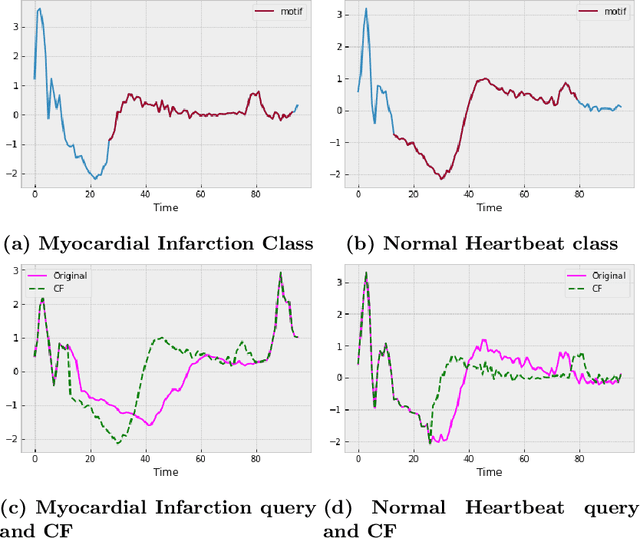Shah Muhammad Hamdi
Pruning Strategies for Backdoor Defense in LLMs
Aug 27, 2025Abstract:Backdoor attacks are a significant threat to the performance and integrity of pre-trained language models. Although such models are routinely fine-tuned for downstream NLP tasks, recent work shows they remain vulnerable to backdoor attacks that survive vanilla fine-tuning. These attacks are difficult to defend because end users typically lack knowledge of the attack triggers. Such attacks consist of stealthy malicious triggers introduced through subtle syntactic or stylistic manipulations, which can bypass traditional detection and remain in the model, making post-hoc purification essential. In this study, we explore whether attention-head pruning can mitigate these threats without any knowledge of the trigger or access to a clean reference model. To this end, we design and implement six pruning-based strategies: (i) gradient-based pruning, (ii) layer-wise variance pruning, (iii) gradient-based pruning with structured L1/L2 sparsification, (iv) randomized ensemble pruning, (v) reinforcement-learning-guided pruning, and (vi) Bayesian uncertainty pruning. Each method iteratively removes the least informative heads while monitoring validation accuracy to avoid over-pruning. Experimental evaluation shows that gradient-based pruning performs best while defending the syntactic triggers, whereas reinforcement learning and Bayesian pruning better withstand stylistic attacks.
Advancing Hate Speech Detection with Transformers: Insights from the MetaHate
Aug 06, 2025Abstract:Hate speech is a widespread and harmful form of online discourse, encompassing slurs and defamatory posts that can have serious social, psychological, and sometimes physical impacts on targeted individuals and communities. As social media platforms such as X (formerly Twitter), Facebook, Instagram, Reddit, and others continue to facilitate widespread communication, they also become breeding grounds for hate speech, which has increasingly been linked to real-world hate crimes. Addressing this issue requires the development of robust automated methods to detect hate speech in diverse social media environments. Deep learning approaches, such as vanilla recurrent neural networks (RNNs), long short-term memory (LSTM), and convolutional neural networks (CNNs), have achieved good results, but are often limited by issues such as long-term dependencies and inefficient parallelization. This study represents the comprehensive exploration of transformer-based models for hate speech detection using the MetaHate dataset--a meta-collection of 36 datasets with 1.2 million social media samples. We evaluate multiple state-of-the-art transformer models, including BERT, RoBERTa, GPT-2, and ELECTRA, with fine-tuned ELECTRA achieving the highest performance (F1 score: 0.8980). We also analyze classification errors, revealing challenges with sarcasm, coded language, and label noise.
AVATAR: Adversarial Autoencoders with Autoregressive Refinement for Time Series Generation
Jan 03, 2025Abstract:Data augmentation can significantly enhance the performance of machine learning tasks by addressing data scarcity and improving generalization. However, generating time series data presents unique challenges. A model must not only learn a probability distribution that reflects the real data distribution but also capture the conditional distribution at each time step to preserve the inherent temporal dependencies. To address these challenges, we introduce AVATAR, a framework that combines Adversarial Autoencoders (AAE) with Autoregressive Learning to achieve both objectives. Specifically, our technique integrates the autoencoder with a supervisor and introduces a novel supervised loss to assist the decoder in learning the temporal dynamics of time series data. Additionally, we propose another innovative loss function, termed distribution loss, to guide the encoder in more efficiently aligning the aggregated posterior of the autoencoder's latent representation with a prior Gaussian distribution. Furthermore, our framework employs a joint training mechanism to simultaneously train all networks using a combined loss, thereby fulfilling the dual objectives of time series generation. We evaluate our technique across a variety of time series datasets with diverse characteristics. Our experiments demonstrate significant improvements in both the quality and practical utility of the generated data, as assessed by various qualitative and quantitative metrics.
EXCON: Extreme Instance-based Contrastive Representation Learning of Severely Imbalanced Multivariate Time Series for Solar Flare Prediction
Nov 18, 2024Abstract:In heliophysics research, predicting solar flares is crucial due to their potential to impact both space-based systems and Earth's infrastructure substantially. Magnetic field data from solar active regions, recorded by solar imaging observatories, are transformed into multivariate time series to enable solar flare prediction using temporal window-based analysis. In the realm of multivariate time series-driven solar flare prediction, addressing severe class imbalance with effective strategies for multivariate time series representation learning is key to developing robust predictive models. Traditional methods often struggle with overfitting to the majority class in prediction tasks where major solar flares are infrequent. This work presents EXCON, a contrastive representation learning framework designed to enhance classification performance amidst such imbalances. EXCON operates through four stages: obtaining core features from multivariate time series data; selecting distinctive contrastive representations for each class to maximize inter-class separation; training a temporal feature embedding module with a custom extreme reconstruction loss to minimize intra-class variation; and applying a classifier to the learned embeddings for robust classification. The proposed method leverages contrastive learning principles to map similar instances closer in the feature space while distancing dissimilar ones, a strategy not extensively explored in solar flare prediction tasks. This approach not only addresses class imbalance but also offers a versatile solution applicable to univariate and multivariate time series across binary and multiclass classification problems. Experimental results, including evaluations on the benchmark solar flare dataset and multiple time series archive datasets with binary and multiclass labels, demonstrate EXCON's efficacy in enhancing classification performance.
M-CELS: Counterfactual Explanation for Multivariate Time Series Data Guided by Learned Saliency Maps
Nov 04, 2024Abstract:Over the past decade, multivariate time series classification has received great attention. Machine learning (ML) models for multivariate time series classification have made significant strides and achieved impressive success in a wide range of applications and tasks. The challenge of many state-of-the-art ML models is a lack of transparency and interpretability. In this work, we introduce M-CELS, a counterfactual explanation model designed to enhance interpretability in multidimensional time series classification tasks. Our experimental validation involves comparing M-CELS with leading state-of-the-art baselines, utilizing seven real-world time-series datasets from the UEA repository. The results demonstrate the superior performance of M-CELS in terms of validity, proximity, and sparsity, reinforcing its effectiveness in providing transparent insights into the decisions of machine learning models applied to multivariate time series data.
SeriesGAN: Time Series Generation via Adversarial and Autoregressive Learning
Oct 28, 2024Abstract:Current Generative Adversarial Network (GAN)-based approaches for time series generation face challenges such as suboptimal convergence, information loss in embedding spaces, and instability. To overcome these challenges, we introduce an advanced framework that integrates the advantages of an autoencoder-generated embedding space with the adversarial training dynamics of GANs. This method employs two discriminators: one to specifically guide the generator and another to refine both the autoencoder's and generator's output. Additionally, our framework incorporates a novel autoencoder-based loss function and supervision from a teacher-forcing supervisor network, which captures the stepwise conditional distributions of the data. The generator operates within the latent space, while the two discriminators work on latent and feature spaces separately, providing crucial feedback to both the generator and the autoencoder. By leveraging this dual-discriminator approach, we minimize information loss in the embedding space. Through joint training, our framework excels at generating high-fidelity time series data, consistently outperforming existing state-of-the-art benchmarks both qualitatively and quantitatively across a range of real and synthetic multivariate time series datasets.
Info-CELS: Informative Saliency Map Guided Counterfactual Explanation
Oct 27, 2024



Abstract:As the demand for interpretable machine learning approaches continues to grow, there is an increasing necessity for human involvement in providing informative explanations for model decisions. This is necessary for building trust and transparency in AI-based systems, leading to the emergence of the Explainable Artificial Intelligence (XAI) field. Recently, a novel counterfactual explanation model, CELS, has been introduced. CELS learns a saliency map for the interest of an instance and generates a counterfactual explanation guided by the learned saliency map. While CELS represents the first attempt to exploit learned saliency maps not only to provide intuitive explanations for the reason behind the decision made by the time series classifier but also to explore post hoc counterfactual explanations, it exhibits limitations in terms of high validity for the sake of ensuring high proximity and sparsity. In this paper, we present an enhanced approach that builds upon CELS. While the original model achieved promising results in terms of sparsity and proximity, it faced limitations in validity. Our proposed method addresses this limitation by removing mask normalization to provide more informative and valid counterfactual explanations. Through extensive experimentation on datasets from various domains, we demonstrate that our approach outperforms the CELS model, achieving higher validity and producing more informative explanations.
ChronoGAN: Supervised and Embedded Generative Adversarial Networks for Time Series Generation
Sep 21, 2024Abstract:Generating time series data using Generative Adversarial Networks (GANs) presents several prevalent challenges, such as slow convergence, information loss in embedding spaces, instability, and performance variability depending on the series length. To tackle these obstacles, we introduce a robust framework aimed at addressing and mitigating these issues effectively. This advanced framework integrates the benefits of an Autoencoder-generated embedding space with the adversarial training dynamics of GANs. This framework benefits from a time series-based loss function and oversight from a supervisory network, both of which capture the stepwise conditional distributions of the data effectively. The generator functions within the latent space, while the discriminator offers essential feedback based on the feature space. Moreover, we introduce an early generation algorithm and an improved neural network architecture to enhance stability and ensure effective generalization across both short and long time series. Through joint training, our framework consistently outperforms existing benchmarks, generating high-quality time series data across a range of real and synthetic datasets with diverse characteristics.
Enhancing Multivariate Time Series-based Solar Flare Prediction with Multifaceted Preprocessing and Contrastive Learning
Sep 21, 2024Abstract:Accurate solar flare prediction is crucial due to the significant risks that intense solar flares pose to astronauts, space equipment, and satellite communication systems. Our research enhances solar flare prediction by utilizing advanced data preprocessing and classification methods on a multivariate time series-based dataset of photospheric magnetic field parameters. First, our study employs a novel preprocessing pipeline that includes missing value imputation, normalization, balanced sampling, near decision boundary sample removal, and feature selection to significantly boost prediction accuracy. Second, we integrate contrastive learning with a GRU regression model to develop a novel classifier, termed ContReg, which employs dual learning methodologies, thereby further enhancing prediction performance. To validate the effectiveness of our preprocessing pipeline, we compare and demonstrate the performance gain of each step, and to demonstrate the efficacy of the ContReg classifier, we compare its performance to that of sequence-based deep learning architectures, machine learning models, and findings from previous studies. Our results illustrate exceptional True Skill Statistic (TSS) scores, surpassing previous methods and highlighting the critical role of precise data preprocessing and classifier development in time series-based solar flare prediction.
Motif-guided Time Series Counterfactual Explanations
Nov 11, 2022



Abstract:With the rising need of interpretable machine learning methods, there is a necessity for a rise in human effort to provide diverse explanations of the influencing factors of the model decisions. To improve the trust and transparency of AI-based systems, the EXplainable Artificial Intelligence (XAI) field has emerged. The XAI paradigm is bifurcated into two main categories: feature attribution and counterfactual explanation methods. While feature attribution methods are based on explaining the reason behind a model decision, counterfactual explanation methods discover the smallest input changes that will result in a different decision. In this paper, we aim at building trust and transparency in time series models by using motifs to generate counterfactual explanations. We propose Motif-Guided Counterfactual Explanation (MG-CF), a novel model that generates intuitive post-hoc counterfactual explanations that make full use of important motifs to provide interpretive information in decision-making processes. To the best of our knowledge, this is the first effort that leverages motifs to guide the counterfactual explanation generation. We validated our model using five real-world time-series datasets from the UCR repository. Our experimental results show the superiority of MG-CF in balancing all the desirable counterfactual explanations properties in comparison with other competing state-of-the-art baselines.
 Add to Chrome
Add to Chrome Add to Firefox
Add to Firefox Add to Edge
Add to Edge